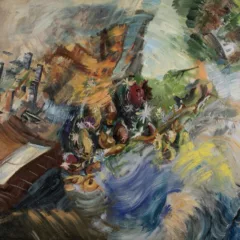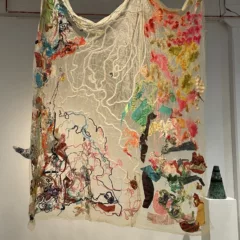Procession: The Art of Norman Lewis at the Pennsylvania Academy of Fine Arts (PAFA through April 3, 2016, then traveling to the Amon Carter Museum of Art and the Chicago Cultural Center), is the artist’s first museum survey. It is a long-awaited event that will bring much-deserved attention to an artist who exhibited widely and was deeply involved with numerous artists’ groups in New York City from the 1930s until his death in 1979. His work is on view in a handful of American museums, but most of the 95 paintings and drawings and 33 prints are drawn from private collectors and the artist’s estate, so this is a unique opportunity to see juxtapositions of his work. Why the exhibition is not traveling to a museum in New York City, I can’t say.
Lewis’ life and work
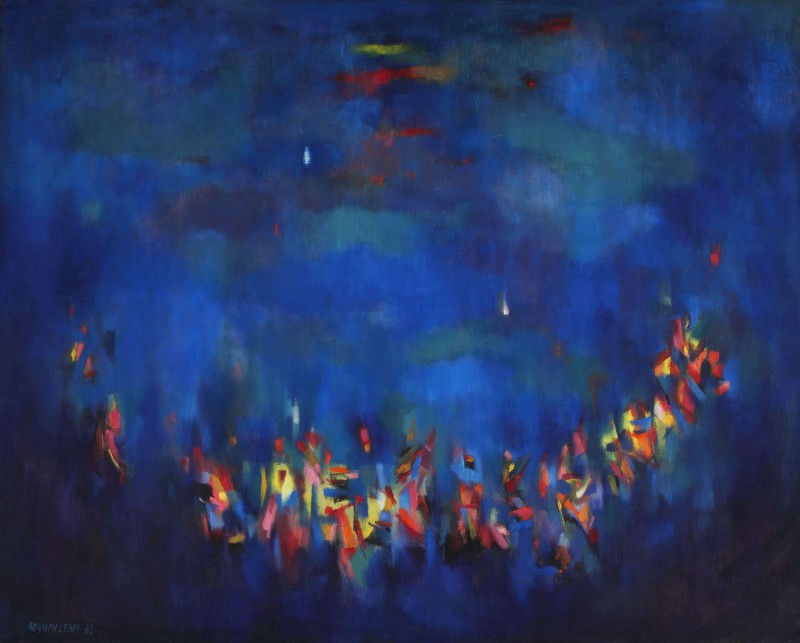
Lewis taught in Augusta Savage’s Studio of Arts and Craft and the Harlem Community Arts Center and was a founding member of the Harlem Artists Guild during the 1930s; participated in the Federal Art Program of the Works Progress Association (FAP, WPA) in the 1940s; exhibited at the Willard Gallery, along with Lyonel Feininger, Mark Tobey, Morris Graves, and David Smith from 1946-1965; participated with the first generation of Abstract Expressionists in The Subjects of the Artists School, The Club and Studio 35 during the 1940s-50s; and in 1963 was a founder, with Romare Beardon and Richard Mayhew, and elected first president of Spiral, an uptown group that sought to define “black art”.

The stunning exhibition, organized by Ruth Fine, surveys Lewis’ paintings, drawings, and prints. The artist is known as an abstractionist, but he never entirely abandoned representation. Fine has organized the exhibition according to recurring themes, rather than chronologically: In the City, Visual Sound, Rhythm of Nature, Ritual, Civil Rights, and Summation. Lewis used conventional media in experimental ways throughout his career, notably combining pencil and ink in paintings on canvas, something de Kooning had done for a while in the mid-1940s. And like Paul Klee, he employed various printmaking techniques in painting, such as stencils used to mask areas of paint. He was a virtuosic draughtsman, and the rarely-seen drawings are likely to be an astonishing surprise for most visitors. Much of his work reveals a flickering pattern of repeated, small marks that bears some resemblance—a 1940s-50s period look—to work by his contemporaries Mark Tobey, Seymour Lipton and Claire Falkenstein.
Community within abstraction
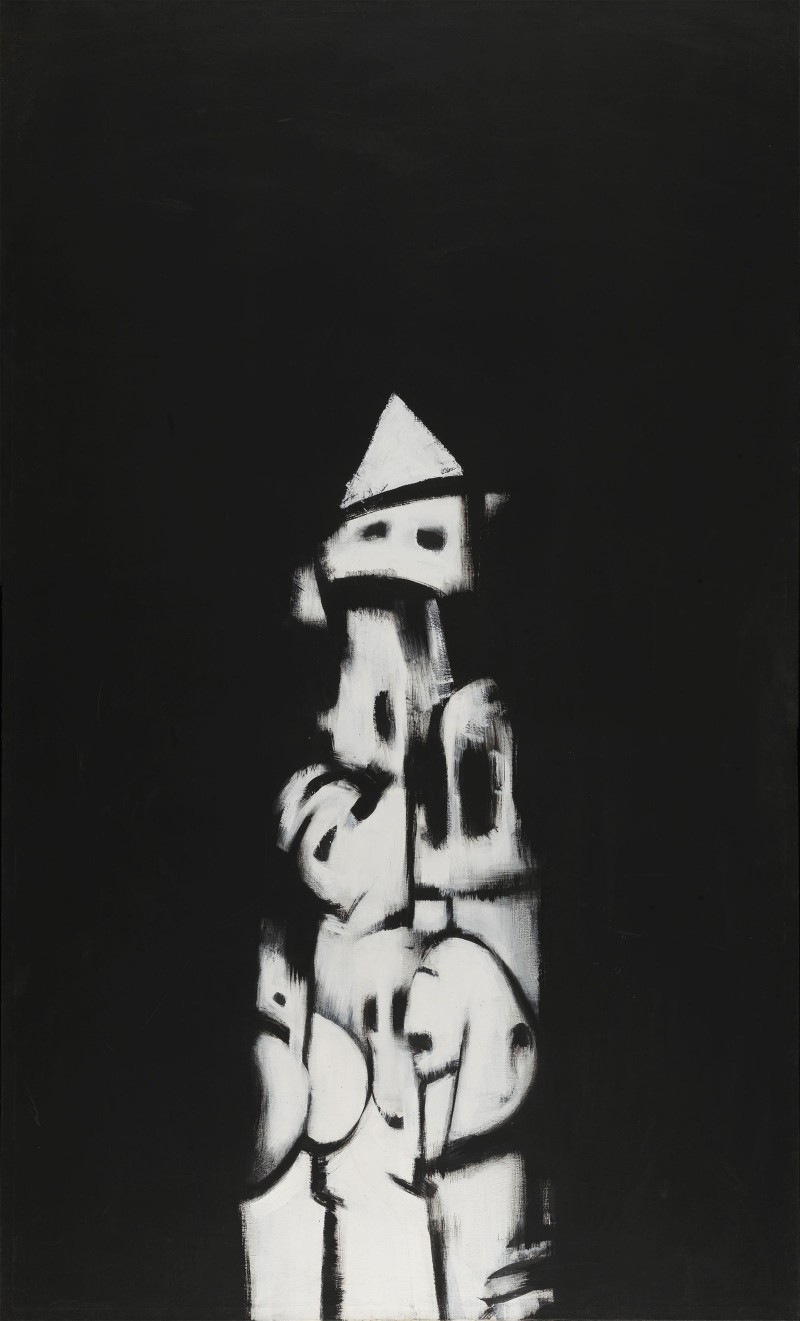
Lewis’ great subject was mankind, not the individual but the community, undifferentiated as to race or background. His abstractions and his processions, parades, marches, and crowd scenes—abstract at a distance but recognizable at close range—all speak to a universalizing ideal. He began in the 1930s to paint images of individuals and small groups, consistent with a larger impulse at the time toward urban, social realism. But the bulk of his work addressed humanity as a whole. This was not a fashionable stance. And during the era of civil rights protests, he was caught up in the debate as to whether artists of African descent (his family was West Indian) should create work that directly championed political ideals—an implicit criticism of abstraction. Lewis, like his good friend Ad Reinhardt, thought that political ideas were only effective when expressed through political action, not through artworks, although during the 1960s, Lewis incorporated subjects relating to the civil rights movement.
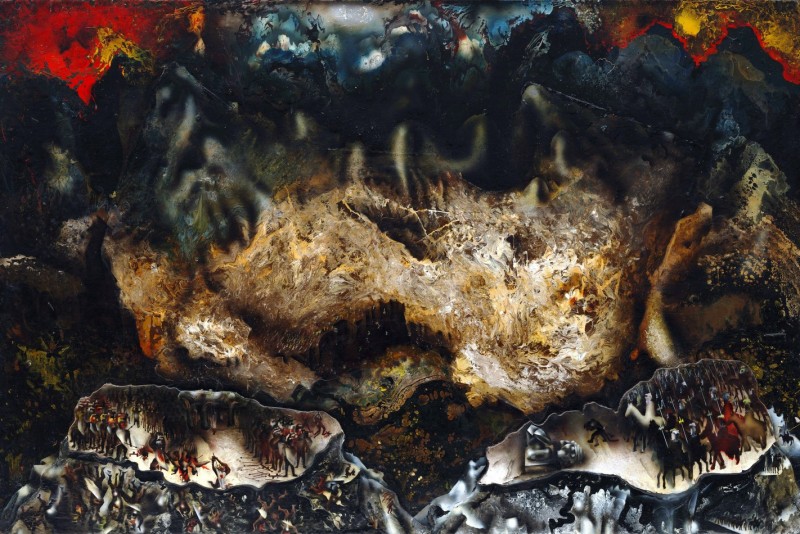
David Alfaro Siqueiros, “Collective Suicide” (1935) lacquer on wood, 40” x 6’, MoMA, © 2015 Siqueiros David Alfaro / Artists Rights Society (ARS)
It strikes me that David Alfaro Siqueiros would have made an impression on Lewis; he was involved with left-wing political groups, as was Lewis, and ran an Experimental Workshop in NYC during 1936, where he introduced the use of industrial enamels, sometimes applied with a spray gun and produced, among other political material, a poster for the 1936 Communist Party candidate for president, the African-American James Ford. Lewis would likely have known “Collective Suicide,” which Siqueros painted in NYC. The painting entered the collection of the Museum of Modern Art (MoMA)—a place we know Lewis frequented—in 1937; the museum describes its subject as “an apocalyptic vision of the Spanish conquest of Mexico, when many of the indigenous inhabitants killed themselves rather than submit to slavery.” From a distance, “Collective Suicide” reads as an abstraction in red and black enamel paint; it is only up close that the group of tiny figures, the Spanish mounted at right, the indigenous population falling from a precipice at left—are discernible across the foreground. This is an effect that Lewis used repeatedly.
Too often overlooked
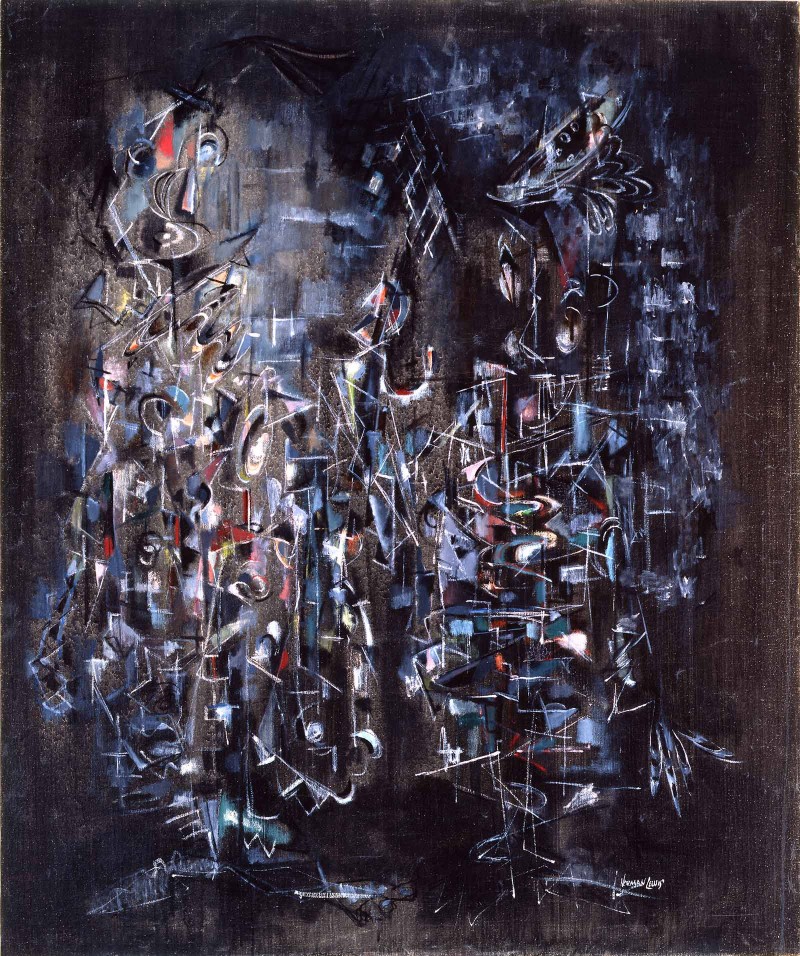
Lewis is less well known than some of his contemporaries, and his movement between abstract and figurative work has certainly contributed to his neglect. The scale of his work has also played a part; the reputation of Abstract Expressionism was tied to that great American value that bigger is better—in terms both of scale of works and gesture, yet until his last decade (with a group of large paintings exhibited here for the first time) Lewis primarily produced easel paintings created with small marks. His race was a factor—he thought that his long-time dealer, Marion Willard, never understood the racial dynamics that interfered with him socializing with potential clients. The fact that he left Willard Gallery in 1965 and never again had regular representation certainly contributed to his waning reputation; Willard may not have sold many works, but she made him known to the art community and he exhibited broadly in museums when affiliated with the gallery.

The sad fact of artists’ reputations is that most artists will be forgotten. Among the group of artists sitting at a dinner table after a session at Studio 35, captured by Max Yavno in 1950 (reproduced on p. 196 of the exhibition catalog), fewer than half have major reputations. From the literature, one would think the only sculptor of the period was David Smith; consequently, who remembers Ibram Lassaw, Peter Grippe, or Herbert Ferber? Numerous painters fared no better; certainly not Robert Goodenough, Bradley Walker Tomlin, Janice Biala, or Hedda Sterne. Lewis’ reputation has been maintained within the African-American community, and this exhibition ought to bring him the broader attention he certainly deserves.
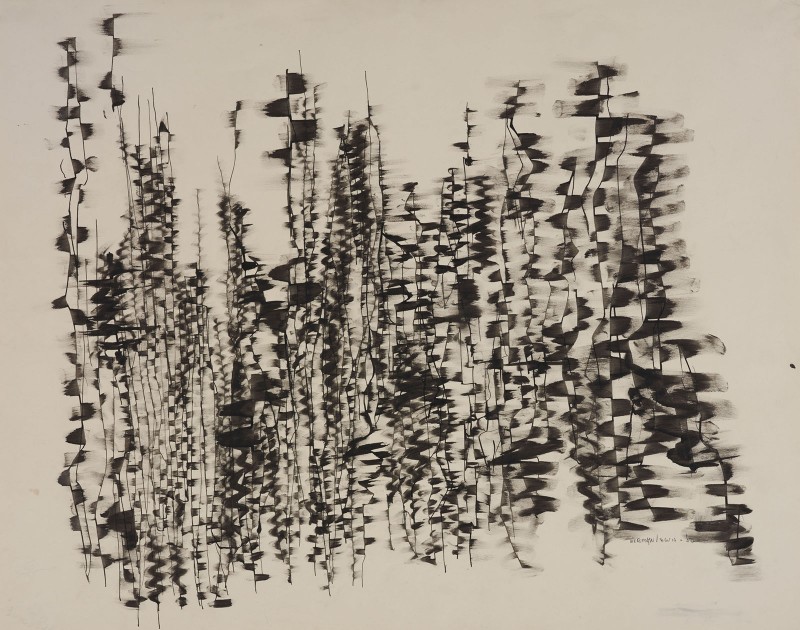
The exhibition is accompanied by an excellent catalog (PAFA, University of CA Press: 2015, ISBN 978-0-520-28800-3) edited by Fine, with contributions by six other scholars: David Acton, Andrianna Campbell, David C. Driskell, Jacqueline Francis, Hellen M. Shannon, and Jeffrey C. Stewart. It is handsomely produced, with excellent illustrations and includes extensive biographical information and a bibliography.


